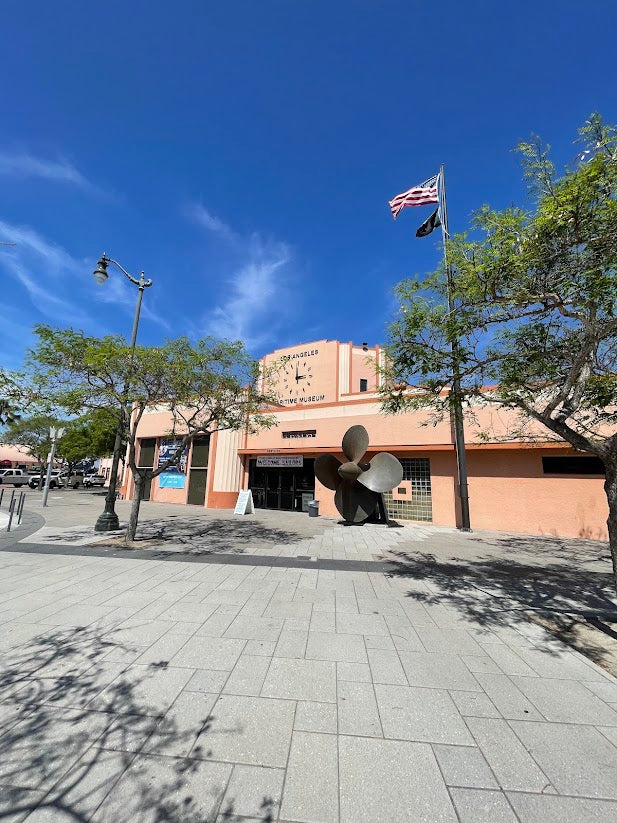Exploring the Maritime Museum of Los Angeles: Why Local Museums Matter Everywhere
Pelagic ProblemsLiving in a coastal city like Los Angeles means being surrounded by the ocean’s influence every day. From the busy ports that keep our economy thriving to the beaches that define our lifestyle, the sea is woven into the culture of Southern California. But the lessons found at the Los Angeles Maritime Museum go far beyond the Pacific Coast, they connect to anyone who has ever stood near water, whether it’s an ocean, a river, or one of the Great Lakes.

[An image of tug boat named Angel's Gate, in the San Pedro Harbor with several containers of cargo ships in the distance.]
Inside the museum, nautical history comes alive through ship models, sailor stories, and artifacts that reveal how the harbor shaped not only Los Angeles but global trade. While the museum is rooted in California, the bigger story it tells belongs to all of us: how waterways connect people, economies, and cultures.
Why Supporting Local Museums Matters
- Preserving Shared History – Coastal, inland, or riverside, every community has a relationship with water. Museums protect those stories and show how they’re part of a larger global network.
- Educational Opportunities – They make history tangible, whether you’re learning about whaling ships on the Pacific or fishing boats on the Great Lakes.
- Community Connection – Visiting a local museum supports the people and organizations dedicated to keeping heritage alive.
- Cultural Enrichment – Understanding nautical history deepens our appreciation not just for oceans, but for rivers and lakes that sustain entire regions.
Living by the Coast or Anywhere Near Water
For those of us who live in LA, the harbor is a daily reminder of how vital the sea is to our community. But the same is true in the Midwest, where rivers and the Great Lakes have shaped towns, industries, and identities for centuries. Supporting your local museum whether it’s about maritime history, farming heritage, or railroads keeps those stories alive and connects us across geographies.
If you’re in the Midwest, places like the National Museum of the Great Lakes (Toledo, OH) or the Wisconsin Maritime Museum (Manitowoc, WI) are incredible examples of how waterways shaped America’s heartland. Even river museums, like the National Mississippi River Museum (Dubuque, IA), show how inland communities are just as tied to water as those on the coasts.
So, while the Los Angeles Maritime Museum is one of my local favorites, its message is universal: the water is more than scenery. It’s the lifeblood of communities, past and present. Wherever you live, take time to learn the history that flows through your hometown you’ll see how it connects you to the wider world.

